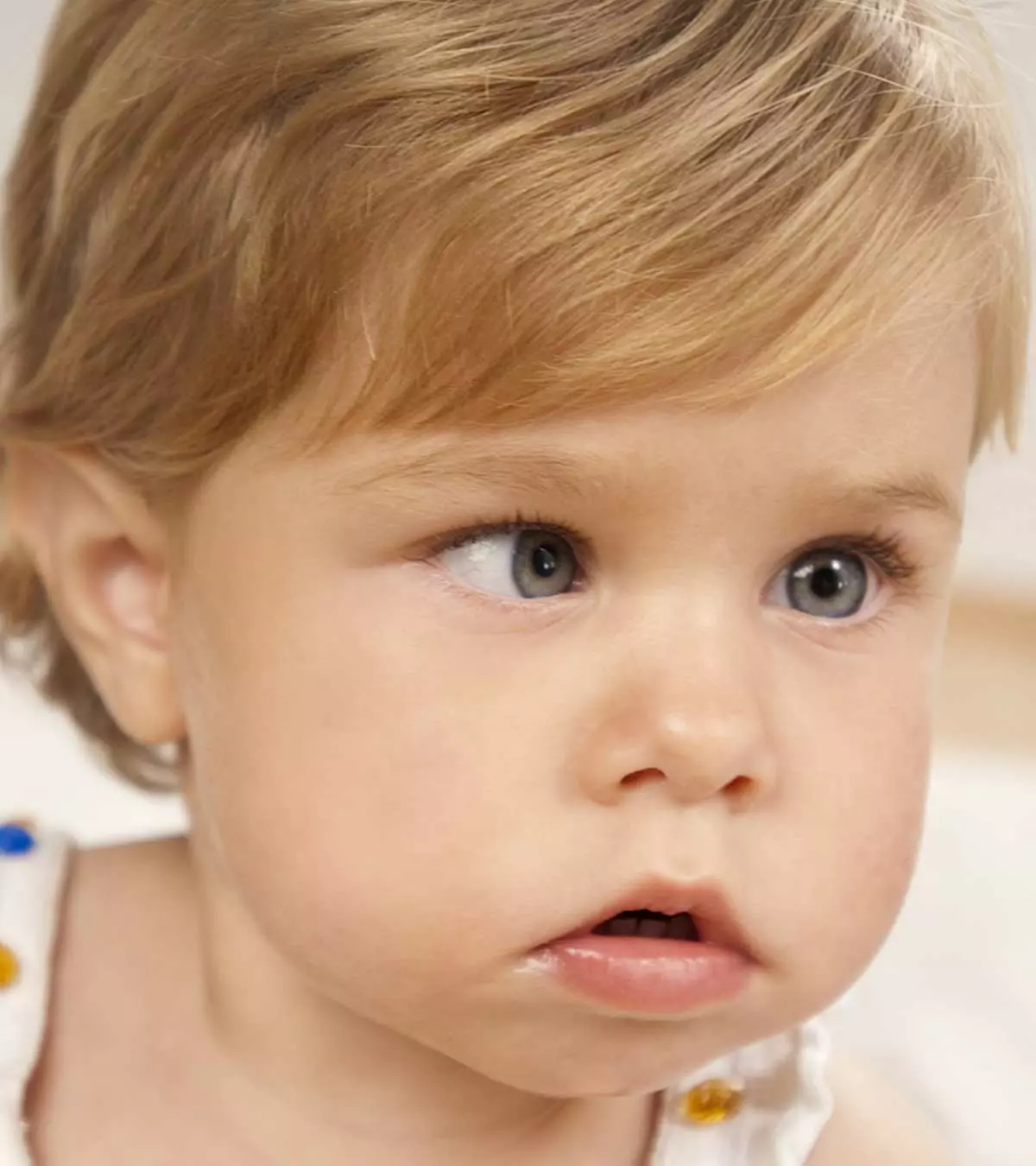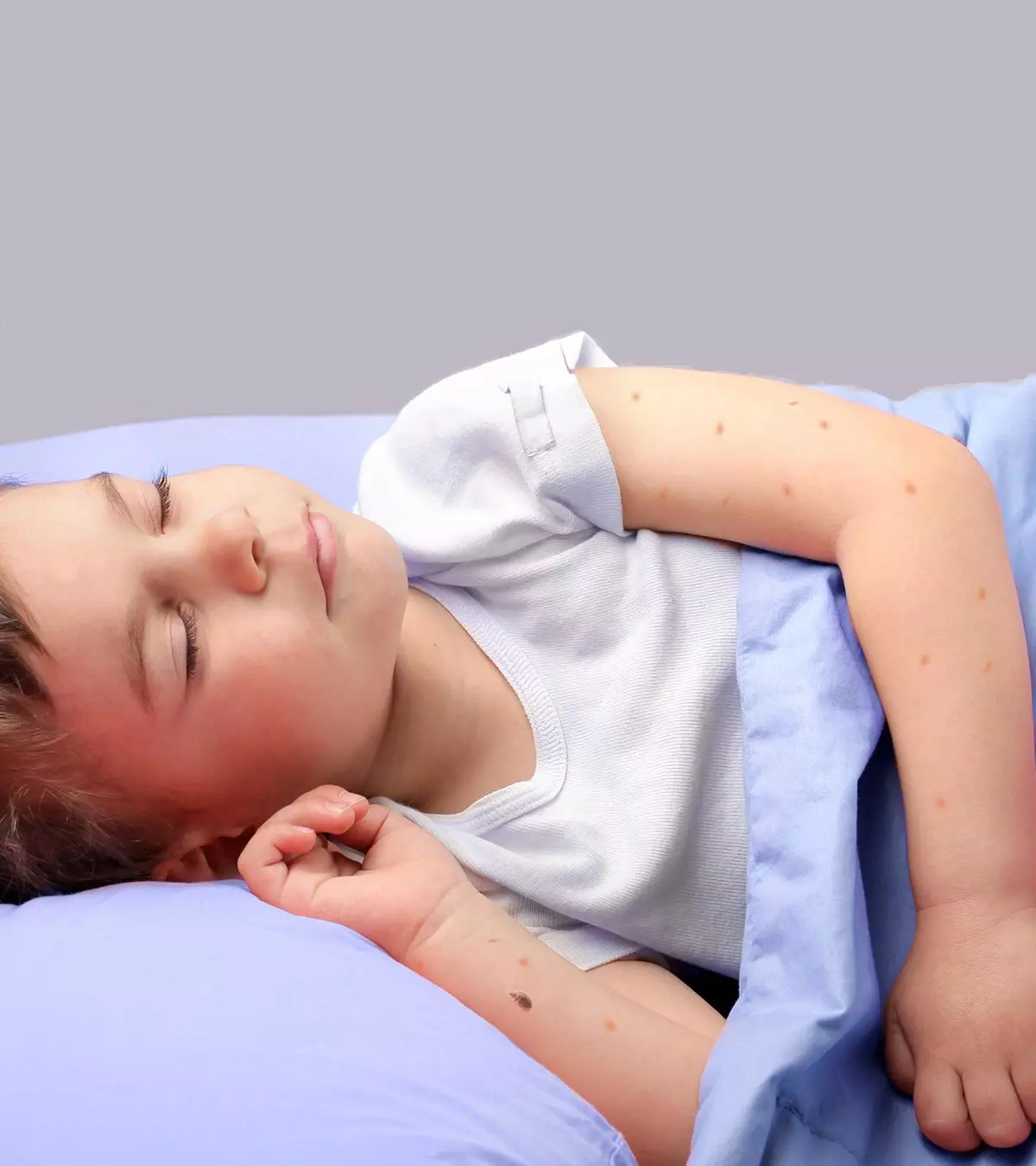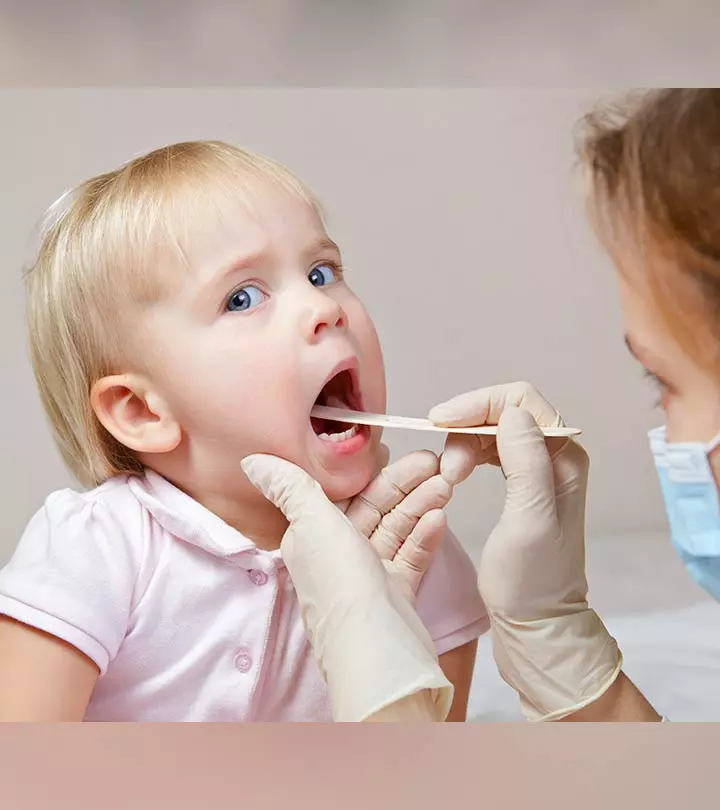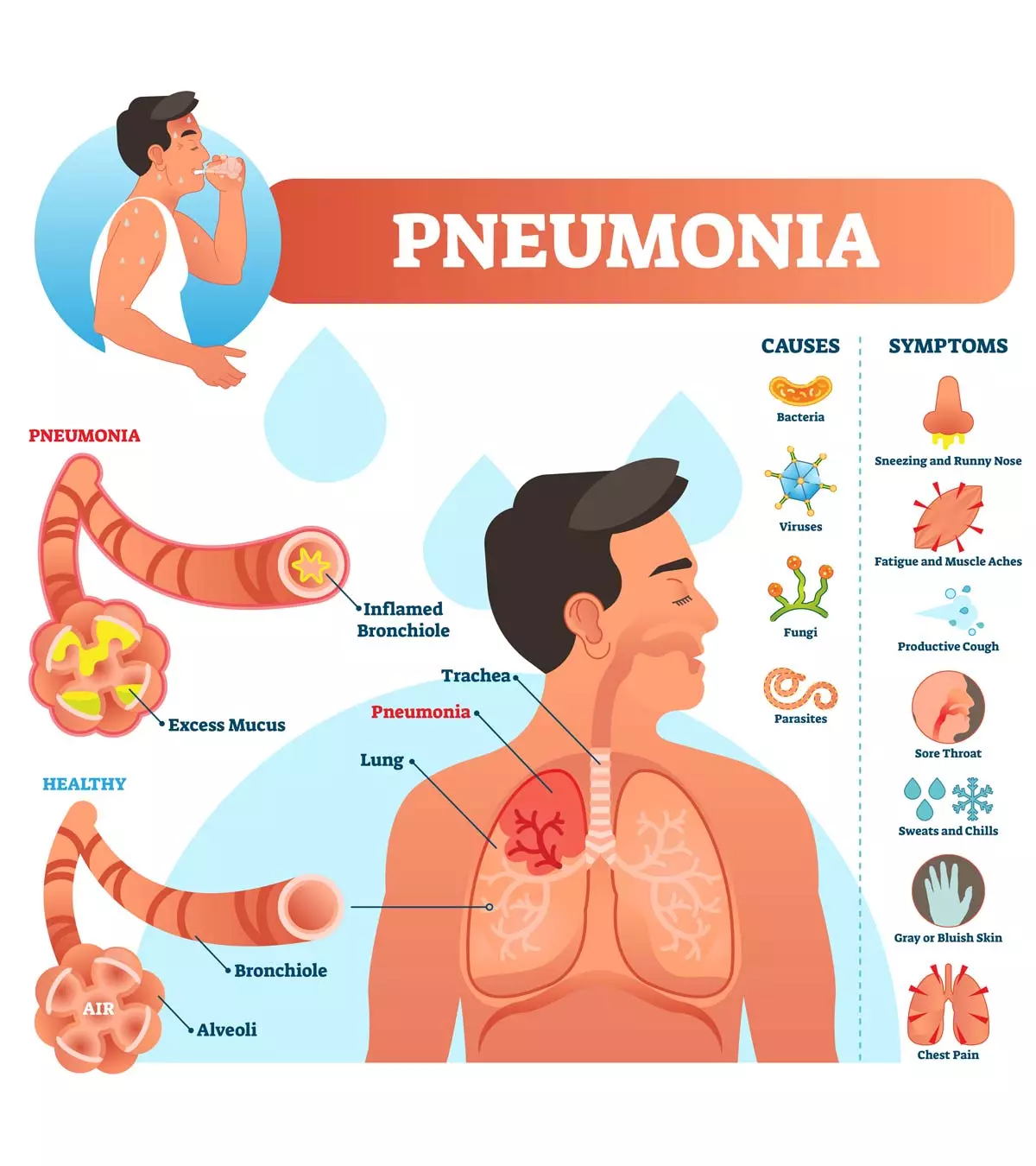
Image: Shutterstock

Pneumonia is an infection that causes lung inflammation and fluid filled alveoli (air sacs). A variety of organisms could cause pneumonia in teens. In addition, the inflamed air sacs may cause breathing difficulties (due to insufficient oxygen levels) in your teen.
This condition commonly occurs in children below four. However, teenagers who are predisposed to risk factors such as smoking, alcohol consumption, and chronic diseases have a high chance of developing pneumonia (1).
Ensuring adequate nutrition and sleep, avoiding smoke exposure, and getting scheduled immunizations are some strategies that could help prevent pneumonia. However, it is crucial to seek medical care if your teen has the signs of pneumonia.
Keep reading to discover the possible causes, risk factors, symptoms, diagnosis, complications, treatment, and preventive measures for pneumonia in teens.
Key Pointers
- Some noticeable symptoms of pneumonia in teens are cough, chest pain, and high fever, which may be caused by Coronaviruses, Aspergillus, Chickenpox, and Influenza virus, among other reasons.
- Some ways to diagnose it are chest x-ray, blood tests, or pulse oximetry.
- It can be treated by hydration, rest, a humidifier for easy breathing, and cough syrups.
- Pneumonia in teens might lead to complications such as sepsis, respiratory failure, and lung abscesses.
- To prevent pneumonia, it’s advisable to get vaccinated, follow a healthy diet, and avoid smoking.
Causes Of Pneumonia In Teenagers

Image: Shutterstock
Fungal, viral, and bacterial infections are common causes of pneumonia. Microbes can spread through respiratory droplets while coughing and sneezing or direct contact with an infected person.
The common microorganisms that cause pneumonia are the following (2).
- Mycoplasma pneumonia
- Streptococcus pneumoniae
- Haemophilus influenzae type b
- Staphylococcus aureus
- Chlamydia pneumoniae
- Group B streptococcus
- Respiratory syncytial virus (RSV)
- Parainfluenza virus
- Influenza virus
- Adenovirus
- Pneumocystis jirovecii
- Aspergillus
- Chickenpox virus (varicella)
- Coronaviruses
 Things to know
Things to knowImmunocompromised teens are more likely to get fungal pneumonia, such as aspergillosisiFungal pneumonia caused by a common mold called Aspergillus which leads to wheezing, shortness of breath, cough, and runny nose. and pneumocystis pneumoniaiA fungal infection affecting one or both lungs and leading to fever, cough, chest pain, and difficulty in breathing. . Mycoplasma pneumoniae and Chlamydia pneumoniae are common causative agents in adolescents (1).
Risk Factors For Pneumonia In Teenagers
The following factors may increase the risk of pneumonia in teens (3).
- Weak immune system due to cancer, HIV infection, malnutrition, or other conditions

Image: Shutterstock
- Chronic diseases, such as cystic fibrosisiAn inherited condition that affects the lungs and digestive system and causes mucus and sweat glands abnormalities leading to blockages. , asthma, or sickle cell anemiaiAn inherited set of blood disorders causing red blood cells to become hard, sticky, and sickle-shaped.
- Lung or airway issues
- Parental smoking
- Crowded living conditions
- Indoor air pollution
- Long term hospitalization may cause nosocomial (hospital-acquired) pneumonia
Although several factors may increase the risk of pneumonia, nutritional deficiencies and weaker immune systems result in a higher risk of pneumonia in children and teens.
Signs And Symptoms Of Pneumonia In Teens
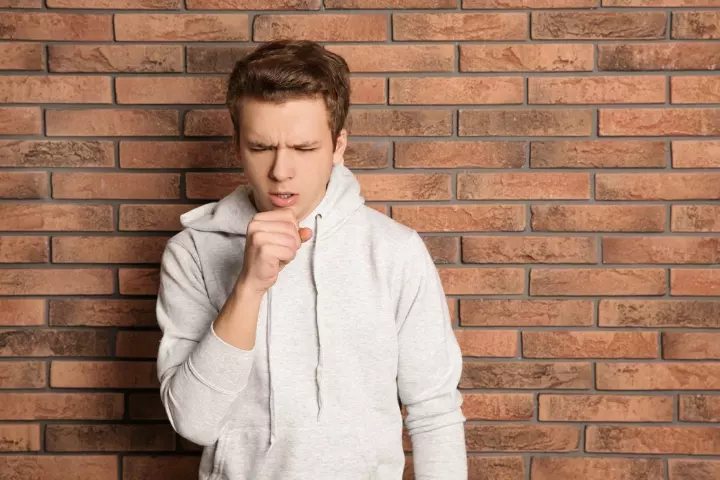
Image: Shutterstock
Depending on the causative agent, the signs and symptoms of pneumonia may vary in each teen. Difficulty breathing is a significant symptom since the air sacs are filled with fluid and pus instead of air.
The onset of the following symptoms and signs may be seen in teens during pneumonia (4).
- Shortness of breath or rapid breathing
- Cough
- Coughing up phlegm or mucus
- Chest pain
- High fever
- Chills
- Vomiting
- Diarrhea
- Lack of appetite
- Fatigue and weakness
- Headache
Viral and bacterial pneumonia can have similar clinical features in the early period. Bacterial pneumonia may have an earlier onset of breathing issues than viral pneumonia. Viral pneumonia could be mild or often resolved with home treatments, but some viruses, such as SARS-CoV-2 that causes COVID-19, may cause severe pneumonia (5) (6). According to a study by the American Academy of Pediatrics (AAP), 6.8% to 15.6% of individuals aged under 18 years hospitalized between January and June Covid-19 have pneumonia.
 Things to know
Things to knowIt is best to seek medical care if your teen has pneumonia symptoms, such as high fever and breathing difficulties, since these also occur in other respiratory infections such as bronchitis. Chest pain in teens may also be a symptom of pneumonia. Early diagnosis of the underlying cause may help avoid complications.
Diagnosis Of Pneumonia In Teens
Diagnosis can be made by history and physical examination. Additional tests are ordered to identify the causative agent. The tests to confirm pneumonia are the following (2).
- A chest X-ray helps to visualize the lung tissue.
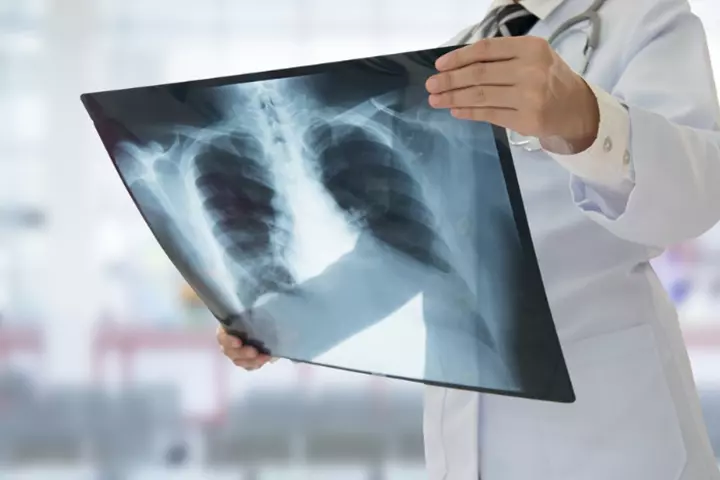
Image: Shutterstock
- Blood tests help measure arterial blood gas, blood count, and inflammatory markers.
- Sputum smear is helpful in diagnosing pulmonary tuberculosisiA contagious disease caused by Mycobacterium tuberculosis that starts in the lungs and may spread to other organs. , which many times, presents with features of pneumonia
- Pulse oximetry measures the amount of oxygen in blood using a sensor on the finger or toe. Oximetry measurements indicate the lung’s ability to absorb oxygen.
- BronchoscopyiA procedure where the doctors use a specific device to look at the airways and diagnose lung issues. helps visualize the airways from inside.
- Chest CT scans visualize the lungs and the organs nearby.
- Pleural fluidiThe fluid present between the lungs and the chest cavity that acts as a lubricant. culture may also help identify the organisms causing pneumonia since the fluid contains bacteria from the lungs.
These diagnostic techniques help doctors correctly identify the type of pneumonia and create an effective treatment plan. It’s important for parents to give a detailed medical history of their teenager to support the diagnosis. The tests may vary for each person, depending on their health, symptoms, and certain specific test results.
Treatment For Pneumonia In Teens
The treatment for pneumonia is decided depending on the cause, severity, and complications of the disease and your teen’s health status. Some teens with uncomplicated pneumonia may receive prescription medications and be allowed to continue treatment at home. Severe pneumonia requires hospitalization with intravenous medications, fluids, and often ventilatory assistance.
The following treatments can provide symptomatic relief during pneumonia (2).
- Hydration
- Adequate rest for a faster recovery
- Cool-mist humidifier to make breathing easier
- Cough syrups or cough medications

Image: Shutterstock
- Acetaminophen for fever
 Quick tip
Quick tipMost teens with viral pneumonia may get better with symptomatic care. Antivirals are rarely prescribed and usually prescribed in severe cases or to immunocompromised individuals.
Bacterial pneumonia and other severe types of pneumonia may require the following treatments (1).
- Oral or intravenous (IV) antibiotics for bacterial pneumonia
- Oxygen therapy
- Fluid replacement (IV fluids)
- Breathing therapies
It is essential to complete the full course of antibiotics to prevent relapse and antibiotic resistance. The time taken for recovery may vary depending on the severity of the illness and complications.
It may take up to a month in some teens for complete healing, whereas some may return to normal activities within a week. Although respiratory symptoms and fever resolve, some may experience tiredness and fatigue for a month during the recovery phase (7). Keep track of the symptoms and contact a healthcare provider if they worsen.
Complications Of Pneumonia In Teens
Teens with low immunity and chronic illnesses are more vulnerable to pneumonia-related complications, such as (7):
- Sepsis (blood infection)
- Multi-organ failure due to sepsis
- Acute respiratory distress syndrome (ARDS)iA condition in which fluid fills the air sacs of the lungs, depriving the body of oxygen.
- Respiratory failure requiring ventilatory or breathing support
- Pleural effusion (fluid build-up in the pleural space around the lungs)
- Lung abscesses (pus-filled cavities in the lungs) that require surgical draining
Despite several treatment and management options, the mortality rate linked to pneumonia and its complications remains high, particularly in children and older adults. Nonetheless, the global data on pneumonia-related deaths, presented in the graph below, demonstrates a considerable decline in mortality across all age groups over the past three decades.

Global deaths from pneumonia by age (1990 to 2019)
Source: Pneumonia; Our World In Data; IHME, Global Burden of DiseasePrevention Of Pneumonia In Teens
The following measures may help prevent pneumonia (8).
- Vaccination can help prevent or lower the risk for pneumonia caused by a few bacteria and viruses, such as haemophilus influenzae type b (Hib), varicella (chickenpox), influenza (flu), streptococcus pneumoniae, bordetella pertussis (whooping cough), and measles (9).
- Wash hands with alcohol-based sanitizer or soap and water.
- A healthy diet for teenagers, physical activity, and adequate sleep help improve immunity.
- Maintain good hygiene and proper ventilation in crowded homes.
- Avoid smoking, exposure to secondhand smoke, and exposure to air pollutants.
- Dosage of preventive medicines can reduce the risk of pneumonia in immunocompromised teens.
Frequently Asked Questions
1. Is pneumonia serious for teens?
Pneumonia can be mild to severe, depending on the symptoms. Pneumonia in teens is usually not serious; however, if the teen has a weakened immune system, unhealthy lifestyle habits, or is suffering from lung disease, pneumonia can be fatal (10).
2. Does COVID turn into pneumonia in teens?
Irrespective of age, COVID can cause pneumonia in severe cases, which usually affects both lungs and can lead to lung injury and even death (11).
3. How long does COVID pneumonia last in teens?
In the case of COVID pneumonia, studies have shown that even if the symptoms of pneumonia resolve, full recovery from complications related to COVID pneumonia may take several months to a year to subside (12).
4. Can you recover from COVID pneumonia?
Most people recover from COVID pneumonia with no post-COVID serious complications or lung damage (13).
5. Can pneumonia go away on its own in teenagers?
Pneumonia in teens is a microbial infection transmittable from an infected individual to a healthy one. It is treatable with home care measures and medications and preventable with vaccination. Further, having your teen follow basic personal hygiene rules could help reduce their risk of getting infected. If your teen has not been vaccinated, speak to a doctor about vaccinating them. Also, annual flu vaccination is now recommended for all individuals above 6 months before the flu season, which occurs at around the end of October in the Northern hemisphere and the end of April in the Southern.
Infographic: Signs And Symptoms Of Pneumonia
The signs and symptoms of pneumonia may vary depending on the underlying infection. However, identifying possible signs at an early stage may help initiate treatment faster. The infographic below highlights the usual symptoms of pneumonia. Take your child to a pediatrician if they appear.
Some thing wrong with infographic shortcode. please verify shortcode syntax Some thing wrong with illustration image shortcode. please verify shortcode syntax
Check out this informative video and learn all about pneumonia – what it is, how it’s treated, and how to prevent it. Get the facts you need to stay safe and healthy!
References
1. Community-Acquired Pneumonia in Infants and Children; American Academy of Family Physicians
2. Pneumonia in Children; Lucile Packard Children’s Hospital; Stanford Children’s Health
3. Pneumonia; World Health Organization
4. Pneumonia In Children; Children’s Hospital of Philadelphia
5. Naming the coronavirus disease (COVID-19) and the virus that causes it; World Health Organization
6. COVID-19 Current Situation; Oklahoma State Department of Health
7. Pneumonia Treatment and Recovery; American Lung Association
8. Pneumonia; Nationwide Children’s Hospital
9. Pneumonia Prevention and Control; Centers for Disease Control and Prevention
10. Pneumonia; MedlinePlus
11. Shamila D. Alipoor et al.; Immunopathogenesis of Pneumonia in COVID-19; Tanaffos (2025)
12. Xiaojun Wu et al.; 3-month, 6-month, 9-month, and 12-month respiratory outcomes in patients following COVID-19-related hospitalisation: a prospective study; The Lancet (2025)
13. COVID-19 Lung Damage; The Johns Hopkins University
14. Viral pneumonia; Icahn School of Medicine at Mount Sinai
15. Aspiration in Babies and Children ;Cedars Sinai
Community Experiences
Join the conversation and become a part of our nurturing community! Share your stories, experiences, and insights to connect with fellow parents.
Read full bio of Dr. Pooja Parikh
Read full bio of Dr Bisny T. Joseph
Read full bio of Dr. Ritika Shah
Read full bio of Anindita Ghatak









